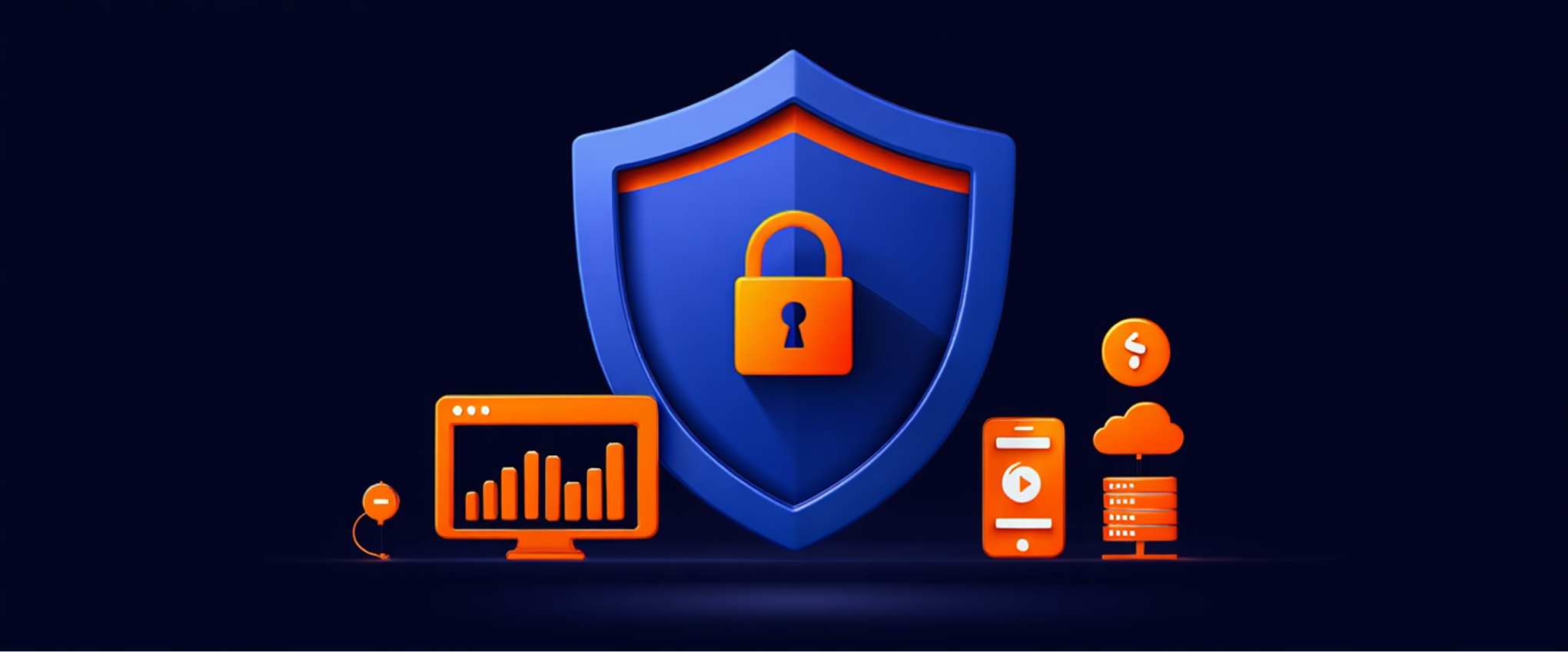Top 10 External Security Risks Found on SMB Websites (and How to Fix Them)

Top 10 External Security Risks Found on SMB Websites (and How to Fix Them)
Small businesses are prime targets for automated attacks. Bots don't care about your headcount they care that your website is online and has a gap to slip through. The good news: most of the highest-impact web risks can be identified and fixed quickly with the right checklist. Try a free external scan of your site now - no credit card required.
Key Takeaways
- Most exploited SMB risks are basic hygiene issues (unpatched software, weak TLS, exposed admin panels).
- External scans + simple hardening steps reduce real-world attack surface dramatically.
- Fix order matters: tackle easy, high-impact items first, then deeper configuration.
- Repeat quarterly (at minimum) your stack changes, and so do threats.
What We Mean by External Security Risks
External risks are weaknesses visible from the public internet the things an attacker (or a bot) can probe without logging in. Think of them as open windows in a building: even if your safe is sturdy, an open window invites trouble.
The Top 10 External Security Risks (and How to Fix Each)
1. Outdated CMS, Plugins, or Themes
Description:
Using an outdated CMS (like WordPress, Joomla, or Drupal) or old plugins and themes is one of the most common causes of website breaches. Cybercriminals constantly scan the web for known vulnerabilities in older versions, making unpatched systems easy targets. These outdated components often contain flaws that allow hackers to upload malicious files, inject code, or gain full administrative access to your site. Even if your site “seems fine,” it could be silently hosting spam or malware without your knowledge.
Risks:
- Full website compromise or defacement
- Malware injection and stolen data
- SEO spam and phishing redirects
Fix:
- Keep your CMS, plugins, and themes updated automatically.
- Remove unused plugins/themes.
- Schedule regular maintenance checks.
2. Weak TLS/SSL Configuration
Description:
SSL (Secure Sockets Layer) or TLS (Transport Layer Security) encrypts the connection between your website and visitors. If your site uses outdated protocols or expired certificates, attackers can intercept or alter traffic — potentially capturing sensitive information such as passwords, credit card numbers, or login sessions. Modern browsers even flag insecure sites, which can drive customers away and damage trust.
Risks:
- “Not Secure” browser warnings
- Data interception or tampering (MITM attacks)
- Loss of customer trust
Fix:
- Use modern TLS (1.2 or higher, ideally 1.3).
- Force HTTPS and enable HSTS.
- Set up automatic certificate renewal. 🔗 Mozilla SSL Configuration Guidelines
3. Exposed Admin Panels & Default Paths
Description:
Attackers often scan for admin pages like /wp-admin, /admin, or /login. These are predictable entry points that can be brute-forced using automated scripts to guess passwords. If your panel is not protected by extra layers (like IP restrictions or MFA), it’s only a matter of time before a bot finds it and tries to break in. Even if your password is strong, allowing global access to your admin URL increases your risk.
Risks:
- Full control of your website
- Unauthorized configuration changes
- Ransomware or data breaches
Fix:
- Restrict admin access by IP.
- Change default admin URLs.
- Require multi-factor authentication (MFA).
🔗 OWASP: Authentication Cheat Sheet
4. Leaky Headers & Missing Security Controls
Description:
HTTP security headers help browsers protect your site and users from common attacks. Without them, browsers won’t know how to handle content safely — leaving openings for clickjacking, content injection, or XSS. Many sites overlook these headers because they don’t affect how the site looks or loads, but they silently play a crucial role in hardening your security posture.
Risks:
- Clickjacking
- XSS (cross-site scripting)
- Data exposure via referrer leaks
Fix:
- Add headers like CSP, HSTS, X-Frame-Options, X-Content-Type-Options, and Referrer-Policy.
5. Publicly Exposed Backups & Test Sites
Description:
During development or migration, businesses often leave backup files or test versions online. These backups can contain sensitive credentials, database dumps, or outdated code with known flaws. Attackers often find these files easily by scanning for common names like backup.zip or test.old. If indexed by search engines, anyone could download your entire site data without hacking anything.
Risks:
- Data leaks (credentials, user info)
- Outdated code exploited by attackers
Fix:
- Delete or restrict non-production sites.
- Never store backups in public_html.
- Use private cloud storage or offsite backups.
🔗 NCSC: Backup Best Practices
6. Default Credentials or Weak Authentication
Description:
Using default usernames and passwords like “admin/admin” or “root/password” is still one of the leading causes of compromise. Even if you’ve changed the password, weak or reused credentials can be guessed through brute-force or credential stuffing attacks. Strong authentication is your first defense — without it, all other security layers fall apart.
Risks:
- Unauthorized admin access
- Credential stuffing or brute-force attacks
Fix:
- Enforce strong, unique passwords and MFA.
- Disable or rename default accounts.
- Rotate passwords regularly.
🔗 NIST Password Guidelines (SP 800-63B)
7. Unvalidated Input / Reflected Parameters
Description:
When a website fails to validate or sanitize input properly (like form fields or URL parameters), attackers can insert malicious code that the browser executes. This is how XSS (Cross-Site Scripting) or redirect attacks happen. It can lead to stolen sessions, data leaks, or even full user impersonation. It’s one of the oldest and most common web vulnerabilities.
Risks:
- Cross-Site Scripting (XSS)
- Phishing redirects
- Data manipulation
Fix:
- Validate and sanitize all user input.
- Escape output and restrict redirects.
- Add Content Security Policy (CSP).
8. Outdated JavaScript Libraries
Description:
Websites rely heavily on third-party JavaScript libraries and frameworks. When these libraries are outdated, they may contain known vulnerabilities that attackers can exploit directly in the browser. Even small plugins or old jQuery versions can become an open door for malicious code injection, cryptojacking, or session hijacking.
Risks:
- Browser-based data theft
- Session hijacking or malicious code injection
Fix:
- Regularly update your JS libraries.
- Remove unused scripts.
- Use Subresource Integrity (SRI) checks.
🔗 OWASP Dependency-Check
9. Misconfigured DNS, SPF/DKIM/DMARC
Description:
Your domain’s DNS records determine how email servers and browsers trust you. Misconfigurations allow attackers to send fake emails from your address or redirect users to malicious servers. Without SPF, DKIM, and DMARC records, your customers might receive phishing emails that look like they came from your business.
Risks:
- Email spoofing or phishing attacks
- Damaged brand reputation
- Mail delivery issues
Fix:
- Enable SPF, DKIM, and DMARC.
- Turn on DNSSEC for your domain.
- Remove unused subdomains or records.
🔗 DMARC.org Guide
10. Exposed APIs, Debug Endpoints, or Verbose Errors
Description:
APIs are essential for modern websites, but if left unauthenticated or exposed with debugging enabled, they can leak sensitive data or system details. Attackers use this information to craft more precise attacks. Similarly, verbose error messages can reveal internal paths, stack traces, or database details that should never be visible to the public.
Risks:
- Data leaks or exposed credentials
- Unauthorized access to systems
- Easier exploitation by attackers
Fix:
- Disable debug mode in production.
- Require authentication for all APIs.
- Limit error details shown to users.
🔗 OWASP API Security Top 10
Compliance & Best Practice (UK Focus)
- Follow UK GDPR and PECR for data and cookies.
- Maintain a security change log.
- Use NCSC small business guidelines as your baseline.
10-Minute Checklist
- Update CMS and plugins
- Verify HTTPS + HSTS
- Enable MFA
- Add essential headers
- Remove test/staging sites
- Check DNS and SPF/DKIM/DMARC
- Run free FYND external vulnerability scan
